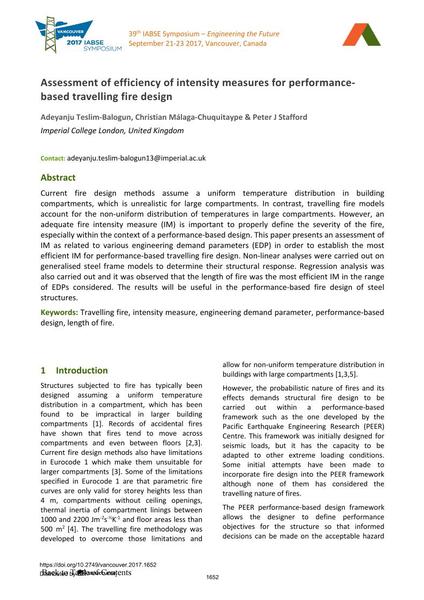Assessment of efficiency of intensity measures for performance- based travelling fire design

|
|
|||||||||||
Bibliografische Angaben
| Autor(en): |
Adeyanju Teslim-Balogun
(Imperial College London, United Kingdom)
Christian Málaga-Chuquitaype (Imperial College London, United Kingdom) Peter J. Stafford (Imperial College London, United Kingdom) |
||||
|---|---|---|---|---|---|
| Medium: | Tagungsbeitrag | ||||
| Sprache(n): | Englisch | ||||
| Tagung: | IABSE Symposium: Engineering the Future, Vancouver, Canada, 21-23 September 2017 | ||||
| Veröffentlicht in: | IABSE Symposium Vancouver 2017 | ||||
|
|||||
| Seite(n): | 1652-1658 | ||||
| Anzahl der Seiten (im PDF): | 7 | ||||
| Jahr: | 2017 | ||||
| DOI: | 10.2749/vancouver.2017.1652 | ||||
| Abstrakt: |
Current fire design methods assume a uniform temperature distribution in building compartments, which is unrealistic for large compartments. In contrast, travelling fire models account for the non-uniform distribution of temperatures in large compartments. However, an adequate fire intensity measure (IM) is important to properly define the severity of the fire, especially within the context of a performance-based design. This paper presents an assessment of IM as related to various engineering demand parameters (EDP) in order to establish the most efficient IM for performance-based travelling fire design. Non-linear analyses were carried out on generalised steel frame models to determine their structural response. Regression analysis was also carried out and it was observed that the length of fire was the most efficient IM in the range of EDPs considered. The results will be useful in the performance-based fire design of steel structures. |
||||
